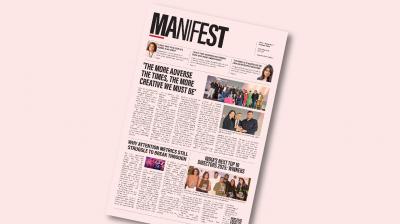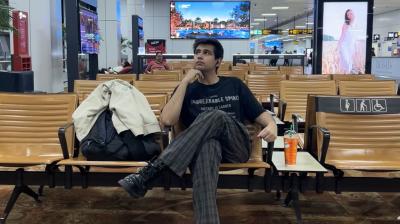There are few spectacles more revealing of the times we live in than two senior executives, seated side by side at a Coldplay concert, being projected onto a giant stadium screen and transformed, within seconds, into viral content for millions of people they have never met.
That is precisely what happened recently to the CEO of Astronomer, a data company, and the firm’s head of HR, when they appeared together on the concert’s Kiss Cam. The camera lingered. The music swelled. The crowd cheered. Then the CEO leaned in while the HR head looked away. The exchange was brief, wordless, and ambiguous, yet it took only a few hours for it to become a flashpoint for public speculation.
In earlier times, such a moment might have passed unnoticed or at most become office gossip. But in 2025, in an era defined by algorithmic virality and the internet’s endless appetite for narrative, even a gesture, or the absence of one, can be interpreted as a statement. The footage was clipped, shared, memed, and dissected across platforms, triggering everything from workplace policy debates to discussions about professional boundaries and leadership conduct.
The discomfort was not just about the failed kiss. It was about who these individuals were — a CEO and a head of HR — and what their interaction implied, particularly in a corporate context. In theory, two colleagues attending a concert should be able to share a row of seats without consequence. Yet what played out on screen suggested a degree of emotional familiarity and physical closeness that many viewers, including likely many employees, found jarring.
Whether or not there was an explicit breach of company policy may be a matter of internal review, but what matters in the public sphere is that the moment appeared to cross an important boundary. It raised immediate concerns around professional judgement, power dynamics, and the optics of workplace relationships, particularly those involving individuals in senior positions. While it may not have constituted misconduct in a legal or contractual sense, it undeniably sparked questions about propriety and leadership discretion.
Astronomer is a company that promises structure and control through data orchestration. Its entire proposition is built on the values of clarity, efficiency, and precision. Yet in this moment, the brand found itself caught in a wave of ambiguity and personal emotion. This irony is difficult to ignore. While the company may operate in clean, logical systems, its leaders, like all people, remain vulnerable to the complexities of human behaviour.
This is the evolving nature of reputational risk. Today, brands are not only judged by their advertising campaigns, market value, or innovation metrics. They are judged by the public conduct, or perceived conduct, of their leadership teams. That behaviour does not need to break rules in order to raise eyebrows. Sometimes, it simply needs to fall short of the expectations the public now has for leadership integrity, boundary-awareness, and emotional intelligence.
In that sense, the Astronomer incident is less about a concert and more about the impossibility of being off-duty. Visibility today is not optional for executives. It extends far beyond earnings calls and conference stages. It encompasses informal settings, real-time gestures, and interactions that are instantly recordable. To lead is now to live within the lens of public judgment — continuously, often unexpectedly.
The question then becomes how companies should respond when a moment like this occurs. Is it best to ignore it and hope it fades? Should they issue a formal statement? Should they attempt to clarify, apologise, or redirect the narrative? In this case, the company chose silence. There was no explanation, no acknowledgement, no contextual framing. Perhaps the intention was to avoid escalation, but in a time when digital silence is rarely neutral, the decision not to respond came across as either strategic detachment or institutional avoidance.
The communications strategies of the past — focused on press releases, product recalls, and controlled messaging — are no longer adequate. Today’s reputation threats are subtler, more fragmented, and driven by emotion as much as fact. They require an approach that blends strategic timing with an authentic tone, and above all, an awareness that audiences today are not just observing, they are interpreting and sharing in real time.
The lesson is not that CEOs should avoid public events or that HR leaders should never be seen in casual settings. It is that, when they are, they are not simply private individuals. They are representatives of a company’s values, its internal culture, and its unspoken norms. The public has been conditioned to search for subtext in every moment. Even in the absence of words, something is being communicated. And in this case, what was communicated struck a nerve.
Ultimately, this may not have been a full-blown crisis. There was no whistleblower, no formal accusation, no known breach of law or compliance framework. But it was certainly a signal. A reminder that in 2025, leadership is no longer just about what you say and do. It is about how you are seen, how you are perceived, and how quickly that perception can shift from neutral to damaging.
You do not need to give a speech to shape public opinion. You do not need to post a controversial comment. Sometimes, all it takes is a moment of closeness, caught on camera, and a global audience ready to decide what it meant.
The author is founder, Grey Cell PR.












